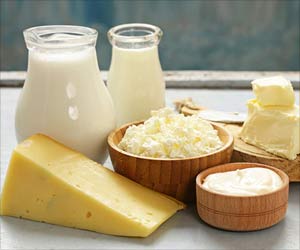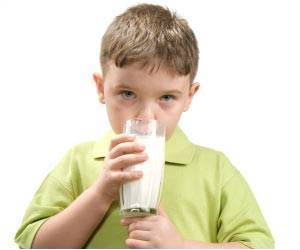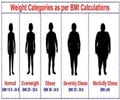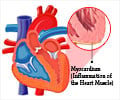Dairy products may increase the risk of myocardial infarction and death in patients with stable angina pectoris.
Highlights:
- Dairy products are conceived as healthy as they contain protein, Vitamin B12, and healthy fats. Moderation is the key
- In people with stable angina pectoris, it is seen that milk and butter increase the chances of stroke and death.
- Cheese however, is seen to decrease the chances of heart attack
The top 10 causes of death
Go to source). One of the most important behavioral risk factors for CVD is an unhealthy diet (2✔ ✔Trusted Source
Intake of 12 food groups and disability-adjusted life years from coronary heart disease, stroke, type 2 diabetes, and colorectal cancer in 16 European countries
Go to source) making dietary intervention a crucial preventive measure. Although there is a widespread agreement that lower intake of red and processed meat and higher intake of fruit, vegetables, and whole grains is protective against CVD, the role of dairy products remains controversial (3✔ ✔Trusted Source
Milk and Health
Go to source). The study that was published in the European Journal of Preventive Cardiology involved taking a look at a cohort from the Western Norway B-vitamin Intervention Trial. During the analysis of 1,929 patients who were a mean age of 61.8 years old and dealt with stable angina pectoris, those behind the study noted various aspects related to the participants' health, lifestyle habits, medication use, and diet including the consumption of dairy products (4✔ ✔Trusted Source
The association between dairy intake and risk of cardiovascular disease and mortality in patients with stable angina pectoris
Go to source).
Experts suggest that since dairy and milk have saturated fats and cholesterol, excess consumption can lead to CVD and puts a CVD patient more at risk of mortality and stroke.
As for the differences in dairy products, it is noted that the study did say that a higher intake of milk was associated with an increased risk of mortality and stroke, but more specific data as to how many increased servings have been taken by the participants in the study.
It has something to do with excess consumption in which cholesterol and saturated fat builds up in the body and cause CVD issues.
As for butter and cheese, butter is incredibly high in saturated fat, trans-fat, and cholesterol compared to cheese. In both 100-gram servings, butter has 51 grams of saturated fat, 3 grams of trans-fat, and 215 mg of cholesterol as compared with cheddar cheese with 19 grams, 1 gram, and 100 mg, respectively.
Having said all that, dairy and milk should not be seen in bad light. It does provide tremendous benefits to health, but knowing what to choose the kind and amount of it according to a person’s profile can still improve overall health.
- The top 10 causes of death - (https://www.who.int/news-room/fact-sheets/detail/the-top-10-causes-of-death)
- Intake of 12 food groups and disability-adjusted life years from coronary heart disease, stroke, type 2 diabetes, and colorectal cancer in 16 European countries - (https://pubmed.ncbi.nlm.nih.gov/31030306/)
- Milk and Health - (https://www.nejm.org/doi/full/10.1056/NEJMra1903547)
- The association between dairy intake and risk of cardiovascular disease and mortality in patients with stable angina pectoris - (https://pubmed.ncbi.nlm.nih.gov/36134600/)
Source-Medindia















